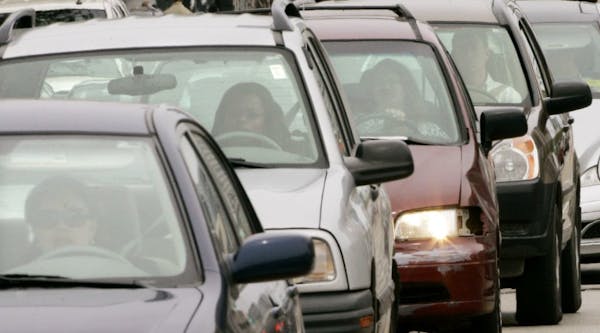Twin Cities drivers are crashing almost as frequently as they did before the onset of the COVID-19 pandemic and the steep drop-off in traffic that ensued.
Crashes across the metro were down just 9% between August and October when compared with the same time period in 2019, even though traffic fell more than 30%. Speeds, however, were up 22%, according to a new study from the traffic analytics company INRIX, which looked at how a reduction in vehicle miles traveled affected travel speeds and collisions in the 25 largest U.S. cities.
The Twin Cities saw some of the sharpest declines in collisions in the nation during the early days of the pandemic. With many people working at home and school shifted to online learning, the number of miles motorists collectively drove between April and July fell dramatically. So did crashes, which were down 50%, according to the INRIX study.
However, collisions quickly rebounded close to pre-COVID levels between August and October and were tracking closer to their 2019 level, the study found. Data from the Minnesota Department of Public Safety (DPS) supports the finding, showing that law enforcement responded to 6,400 wrecks in October compared with 6,472 in October 2019. Numbers comparing September with 2019 also were nearly identical.
The INRIX study found that I-35W at the 5th Avenue/11th Street ramps leading into and out of downtown Minneapolis was the most-crash prone spot in the metro. When comparing April to October in 2019 with 2020, crashes there dropped only 4% despite a sharp downturn in traffic.
Other high-risk crash spots included I-94 at Hwy. 52 in St. Paul, I-694 at University Avenue in Fridley, the east junction of I-35W at I-94 and along Hwy. 100 in Edina.
Traffic data indicate that average speeds increased during the April to July period, and extreme speeds — 100 mph or more — became more common. That behavior may have carried over into the third quarter, leading to a significant rise in the death rate — a statistic that shows how safe the roads are at any given time. That's cause for concern, said INRIX report author Bob Pishue.
"With faster travel, crashes are more severe," he said. "If what we see initially keeps going, fast speeds and winter weather, that is not a good scenario."
This has already been a deadly year on Minnesota roads. As of Thursday, the death toll stood at 374, which is 10 more than the 364 fatalities recorded all of last year, according DPS.
Nationwide the death rate was 20% higher from January to June when compared with the same period in 2019, despite a 17% drop in miles driven. The number of people dying in motor vehicle crashes was up about 5% through September when compared with the same nine-month period last year, with more than 30,390 people killed since January, the National Safety Council (NSC) said.
Speeding is not the only problem. A study earlier this year from the National Highway Traffic Safety Administration (NHTSA) found that two-thirds of drivers involved in a crash that led to a fatality or serious injury tested positive for at least one active drug, including alcohol, marijuana or opioids.
The findings from NHTSA and the NSC "paint an unpleasant picture of what is happening on U.S. roadways despite a large drop in vehicle miles traveled," Pishue wrote.
Tim Harlow • 612-673-7768
Two teens wounded, one seriously, in north Minneapolis shooting

How did gambling develop into a major industry in Minnesota?
Myon Burrell arrested on probable cause of narcotics violation
Brooklyn Park community development director departs for Bloomington

